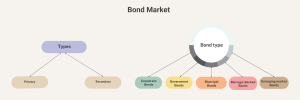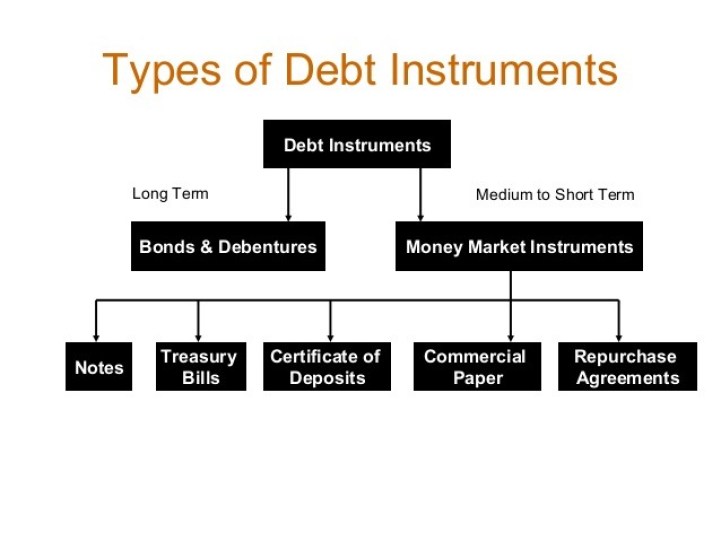What is a debt instrument?
Any fixed income asset that allows the lender (or giver) to earn a fixed interest along with the principal amount while allowing the issuer (or taker) to use it to raise funds at a cost is called a Debt Market Instrument. Debt market instruments acts as a legal obligation on the issuer (or taker) who will have to repay the borrowed sum along with the interest to the lender in a timely manner. Some examples of debt market instruments include debentures, bonds, certificates, bills of exchange, leases, etc. Not necessary to be on paper, it can also be in an electronic form. The oldest and the largest element of the Indian debt market instruments is the Government Securities (G-Secs). It plays a very important role in the Indian economy by providing a benchmark to determine the level of interest rates in the country. The yields of the government securities are treated at a risk-free rate of return in any economy. Hence, for an individual investor, G-Secs is one of the best investment options as there are zero default risk and less volatility.
Banks and financial institutions are allowed by the Reserve Bank of India to conduct transactions in debt instruments with non-bank clients and also among themselves. Notably, debt instruments provide fixed and higher returns, thus giving them an edge over fixed deposits by the banks. The duration of these instruments can either be long-term or short-term. Funds that are raised through short-term debt instruments must be repaid within a year, for example, credit card bills and treasury notes. On the other hand, long-term debt instruments are the ones that are paid over a year or more, for example, long-term loans and mortgages.
Common Types Of Debt Instruments:
- Debentures: Debentures are a certificate of agreement of loans given under the stamp of the company, undertaking that the debenture holder will get a fixed return (on the basis of the fixed interest rates) and the principal amount whenever the debenture matures. It is generally a long-term debt instrument commonly used by governments and large companies to obtain funds. As debentures are not backed by any security, it carries an advantage by not putting any burden of the asset on the issuer and thereby allowing subsequent financing.
- Bonds: A bond is an IOU in which the investor agrees to lend money to a company or government in exchange for a predetermined interest rate. They are generally issued by large companies, central bank and government. When a company wants to expand, it can borrow money by issuing bonds at different rates and then selling them to the public. As bonds ensure payment of fixed interest rates along with the principal amount to the lenders, it can be said that they work the way loans do. There are various types of bonds, having different features and characteristics. For example, Government bonds, Institutional bonds, Corporate Bonds, and Municipal Bonds.

- Government Securities (G-Secs): They are the supreme securities issued by the Reserve Bank of India, on behalf of the Government of India and in lieu of the market borrowing program of the Central Government. G-Secs are issued at a face value with no default risk since they carry a sovereign guarantee. Due to its high liquidity, it can be sold by the investors in the secondary market. G-Secs can also be redeemed at its face value on maturity with no tax deducted at source. The maturity of these securities ranges from 2-30 years.
- Fixed Deposits: Fixed deposits also known as term deposits or FDs are money deposited in a bank for a specific time, earning a fixed rate of interest. The interest on the money deposited is paid by the banks. Due to its nature of high liquidity, a depositor can make a premature withdrawal or break the FD by paying a penalty. By doing so, the depositor will be given 1% less interest on withdrawal. Fixed Deposits offer fixed and guaranteed returns. They are flexible in nature as their duration of maturity ranges from 1 month to 10 years. It also gives the ease to raise a loan against it, and also one can even invest small amounts in an FD. However, few drawbacks of FD’s are that returns are lower as compared to other investment options like share and mutual funds, and the interest does not cover the rising inflation.
- Mortgage: A mortgage is a loan against a residential property that is secured by the collateral of specified real estate property. The borrower is obliged to pay back with a predetermined set of payments, in which failure to do so can lead to seizing of the property and selling it off to recover the loaned amount. The most well-known mortgages are a 30-year fixed and a 15-year fixed. They can be as short as five years and as long as 40 years. However, stretching payments over more years reduces the monthly amount to be paid but also increases the amount of interest to pay.
Conclusion
The public or private investors can use the debt market instruments to get fixed and high returns, depending upon the features, tenure, liquidity, and flexibility of the instruments respectively. On the contrary, large business corporations, government, banks, and other financial institutions can use these debt instruments for the expansion of their activities and also reach their short-term and long-term goals.
By: Sparsh Duggal





